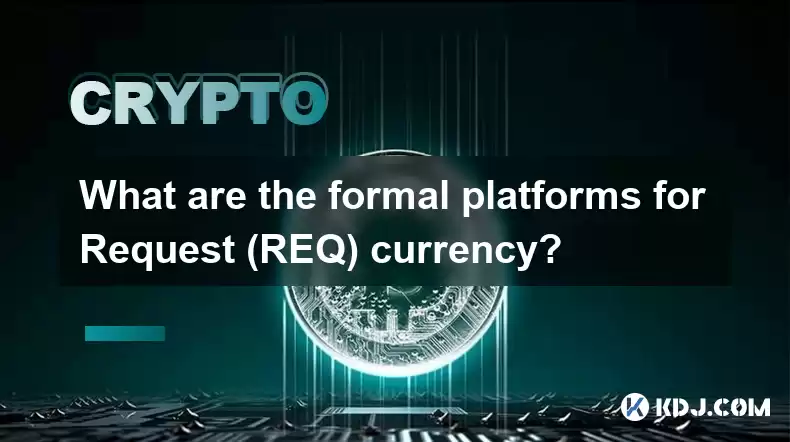-
 Bitcoin
Bitcoin $119900
0.91% -
 Ethereum
Ethereum $4576
8.55% -
 XRP
XRP $3.264
4.05% -
 Tether USDt
Tether USDt $0.9998
-0.05% -
 BNB
BNB $834.7
4.17% -
 Solana
Solana $191.8
9.96% -
 USDC
USDC $0.9998
-0.02% -
 Dogecoin
Dogecoin $0.2363
6.08% -
 TRON
TRON $0.3525
2.56% -
 Cardano
Cardano $0.8419
9.12% -
 Chainlink
Chainlink $23.19
9.97% -
 Hyperliquid
Hyperliquid $44.97
4.53% -
 Stellar
Stellar $0.4489
4.20% -
 Sui
Sui $3.876
6.19% -
 Bitcoin Cash
Bitcoin Cash $618.1
7.14% -
 Hedera
Hedera $0.2617
6.55% -
 Ethena USDe
Ethena USDe $1.000
-0.03% -
 Avalanche
Avalanche $24.61
7.96% -
 Litecoin
Litecoin $131.7
9.52% -
 Toncoin
Toncoin $3.502
3.62% -
 UNUS SED LEO
UNUS SED LEO $9.093
1.32% -
 Shiba Inu
Shiba Inu $0.00001358
5.37% -
 Uniswap
Uniswap $11.50
5.05% -
 Polkadot
Polkadot $4.150
7.77% -
 Dai
Dai $0.9997
-0.05% -
 Cronos
Cronos $0.1650
-0.75% -
 Ethena
Ethena $0.7981
2.06% -
 Pepe
Pepe $0.00001216
8.64% -
 Bitget Token
Bitget Token $4.467
1.74% -
 Aave
Aave $319.2
9.18%
What are the formal platforms for Request (REQ) currency?
When selecting a platform for trading REQ, it's crucial to evaluate factors such as trading volume, fees, security, user interface, supported order types, customer support, and reputation to ensure an optimal trading experience.
Dec 25, 2024 at 06:37 pm

Key Points:
- Exchanges with the Highest Trading Volume for REQ
- Decentralized Exchanges (DEXs) for REQ
- Considerations for Choosing a Platform for REQ Trading
Exchanges with the Highest Trading Volume for REQ
For those looking to trade REQ with high liquidity and tight spreads, centralized exchanges offer the best options. The following are the exchanges with the highest trading volume for REQ:
- Binance: Binance is the leading cryptocurrency exchange globally, known for its vast selection of coins, low fees, and advanced trading features. REQ is traded on Binance's main exchange, Binance Spot, and its decentralized alternative, Binance DEX.
- Huobi Global: Huobi Global is another popular exchange with a large market share. It offers a range of trading pairs for REQ, including USDT, BTC, and ETH. Huobi features competitive fees and advanced order types.
- OKX: OKX is a top-tier exchange with a substantial user base. It provides access to a wide variety of markets, including spot, futures, and margin trading. REQ is traded on OKX's main exchange, OKX Spot.
- Bybit: Bybit is a derivatives-focused exchange that enables leveraged trading. It offers perpetual futures contracts for REQ with up to 100x leverage. Bybit is renowned for its low fees and user-friendly interface.
- Bitfinex: Bitfinex is a veteran exchange known for its deep liquidity and professional trading tools. It features a wide range of order types and supports advanced strategies. REQ is traded on Bitfinex's main exchange, Bitfinex Spot.
Decentralized Exchanges (DEXs) for REQ
For those seeking non-custodial trading and reduced counterparty risk, decentralized exchanges (DEXs) provide an alternative. The following DEXs offer trading pairs for REQ:
- Uniswap: Uniswap is the largest DEX by trading volume. It operates on the Ethereum blockchain and offers a simple and intuitive interface for swapping tokens. REQ is traded on Uniswap against ETH and WBTC.
- SushiSwap: SushiSwap is another popular DEX that runs on Ethereum and Polygon. It offers a wide selection of trading pools, including one for REQ-ETH. SushiSwap provides yield farming opportunities for LP token holders.
- 1inch Exchange: 1inch Exchange is a decentralized exchange aggregator that searches multiple DEXs to find the best execution prices for trades. It offers a variety of trading pairs for REQ, including USDT, BTC, and ETH.
- Balancer: Balancer is a DEX that specializes in automated portfolio management and liquidity provision. It allows users to create custom pools with customized rules and token weights. REQ is available in several liquidity pools on Balancer.
- Curve Finance: Curve Finance is a DEX optimized for stablecoin trading. It offers low slippage and competitive fees for trades involving REQ and USDT or ETH.
Considerations for Choosing a Platform for REQ Trading
When selecting a platform for trading REQ, the following considerations are crucial:
- Trading Volume: Higher trading volume indicates more liquidity and tighter spreads, which can benefit traders.
- Fees: Exchanges and DEXs charge various fees for trading, including trading fees, maker/taker fees, and withdrawal fees. Comparing fees is essential for minimizing trading costs.
- Security: The security of the platform is paramount. Look for exchanges with robust security measures, including two-factor authentication (2FA), cold storage of funds, and regular security audits.
- User Interface: A user-friendly interface is important for a comfortable and efficient trading experience.
- Supported Order Types: Different platforms provide various order types, such as limit orders, stop orders, and market orders. Choose a platform that offers the order types you require.
- Customer Support: In case of any issues or queries, prompt and responsive customer support is invaluable.
- Reputation and Trust: Consider the exchange's or DEX's reputation in the crypto community and its track record of reliability.
FAQs
What is Request Network (REQ)?
- Request Network is a decentralized payment network that facilitates secure, transparent, and auditable payments.
What is the purpose of REQ tokens?
- REQ tokens are the native utility tokens of the Request Network. They are used to pay transaction fees, facilitate payments, and govern the network.
Why might I want to trade REQ?
- Investors may trade REQ for speculative purposes, to participate in the Request Network ecosystem, or to hedge against risks.
Which trading platform is the best for REQ?
- The best trading platform for REQ depends on individual preferences and needs. Consider trading volume, fees, security, user interface, and other factors.
Disclaimer:info@kdj.com
The information provided is not trading advice. kdj.com does not assume any responsibility for any investments made based on the information provided in this article. Cryptocurrencies are highly volatile and it is highly recommended that you invest with caution after thorough research!
If you believe that the content used on this website infringes your copyright, please contact us immediately (info@kdj.com) and we will delete it promptly.
- Unich's OTC Exchange: Surging with $1.2B Volume – What's the Hype?
- 2025-08-13 02:50:11
- MoonBull's Explosive Moves: Your Crypto Whitelist Ticket to Ride!
- 2025-08-13 02:30:11
- MAGACOIN Finance: Don't Miss the Presale Bonus!
- 2025-08-13 02:30:11
- Trump's Crypto Kingdom: $2.4 Billion and Counting
- 2025-08-13 02:50:11
- Solana, LSTs, and SEC Approval: A New Dawn for Crypto?
- 2025-08-13 02:55:12
- Bitcoin's Profit Surge: Unpacking the BTC Value Boom
- 2025-08-13 02:55:12
Related knowledge

How to purchase Aragon (ANT)?
Aug 09,2025 at 11:56pm
Understanding Aragon (ANT) and Its PurposeAragon (ANT) is a decentralized governance token that powers the Aragon Network, a platform built on the Eth...

Where to trade Band Protocol (BAND)?
Aug 10,2025 at 11:36pm
Understanding the Role of Private Keys in Cryptocurrency WalletsIn the world of cryptocurrency, a private key is one of the most critical components o...

What is the most secure way to buy Ocean Protocol (OCEAN)?
Aug 10,2025 at 01:01pm
Understanding Ocean Protocol (OCEAN) and Its EcosystemOcean Protocol (OCEAN) is a decentralized data exchange platform built on blockchain technology,...

How to invest in Kyber Network Crystal v2 (KNC)?
Aug 12,2025 at 05:21pm
Understanding Kyber Network Crystal v2 (KNC)Kyber Network is a decentralized liquidity hub built on the Ethereum blockchain that enables instant token...

Where can I buy UMA (UMA)?
Aug 07,2025 at 06:42pm
Understanding UMA and Its Role in Decentralized FinanceUMA (Universal Market Access) is an Ethereum-based decentralized finance (DeFi) protocol design...

What exchanges offer Gnosis (GNO)?
Aug 12,2025 at 12:42pm
Overview of Gnosis (GNO) and Its Role in the Crypto EcosystemGnosis (GNO) is a decentralized prediction market platform built on the Ethereum blockcha...

How to purchase Aragon (ANT)?
Aug 09,2025 at 11:56pm
Understanding Aragon (ANT) and Its PurposeAragon (ANT) is a decentralized governance token that powers the Aragon Network, a platform built on the Eth...

Where to trade Band Protocol (BAND)?
Aug 10,2025 at 11:36pm
Understanding the Role of Private Keys in Cryptocurrency WalletsIn the world of cryptocurrency, a private key is one of the most critical components o...

What is the most secure way to buy Ocean Protocol (OCEAN)?
Aug 10,2025 at 01:01pm
Understanding Ocean Protocol (OCEAN) and Its EcosystemOcean Protocol (OCEAN) is a decentralized data exchange platform built on blockchain technology,...

How to invest in Kyber Network Crystal v2 (KNC)?
Aug 12,2025 at 05:21pm
Understanding Kyber Network Crystal v2 (KNC)Kyber Network is a decentralized liquidity hub built on the Ethereum blockchain that enables instant token...

Where can I buy UMA (UMA)?
Aug 07,2025 at 06:42pm
Understanding UMA and Its Role in Decentralized FinanceUMA (Universal Market Access) is an Ethereum-based decentralized finance (DeFi) protocol design...

What exchanges offer Gnosis (GNO)?
Aug 12,2025 at 12:42pm
Overview of Gnosis (GNO) and Its Role in the Crypto EcosystemGnosis (GNO) is a decentralized prediction market platform built on the Ethereum blockcha...
See all articles

























































































